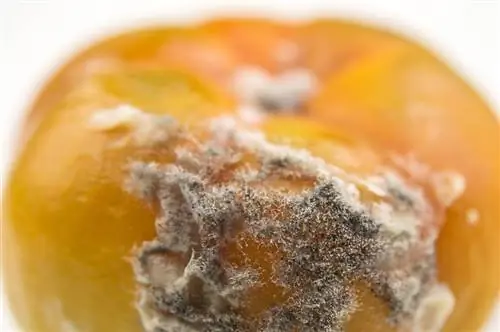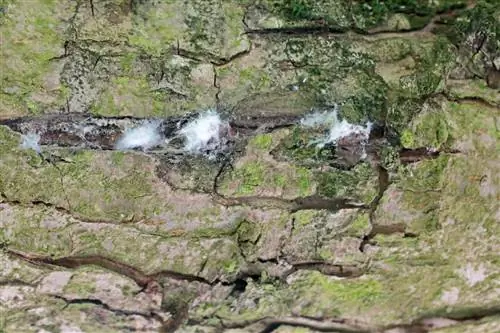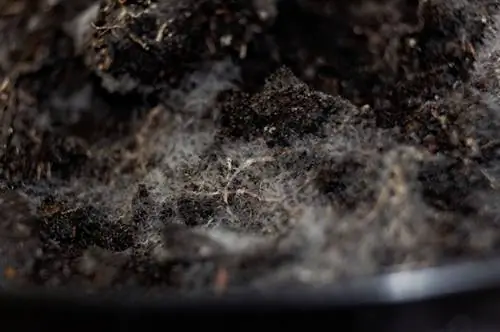- Author admin [email protected].
- Public 2024-01-02 03:03.
- Last modified 2025-01-23 11:19.
Mold is a ubiquitous problem when growing tomatoes. From sowing to harvest, the growing conditions for tomato plants provide an excellent breeding ground for mold. How to avoid the problem.

How to prevent and combat mold on tomatoes?
To avoid mold on tomatoes, you should use sterilized sowing soil, clean growing pots and garlic tea or valerian flower extract. You should also ventilate daily and dispose of infected plant parts. Prevention and control include measures such as primary rock powder, milk-water solution and horsetail broth.
Avoid mold during cultivation
Tomato seeds only germinate at temperatures of around 20 to 24 degrees Celsius in a constantly moist environment. Since mold also feels at home in this environment, the impending danger is obvious. By observing the following precautions you can avoid mold on the sowing:
- Always sterilize sowing soil in the oven at 180 degrees for 20-30 minutes
- Wash the cultivation pots carefully with hot soda water
- Soak tomato seeds in garlic tea or valerian flower extract before sowing
- Air the seed containers and mini greenhouse for several minutes every day
If mold still spreads during cultivation, to be on the safe side, dispose of all infected seedlings. There are hundreds of types of mold, some of which are highly toxic. Only trained experts are able to tell the difference between harmless and poisonous.
Prevent and combat mold diseases on tomatoes
Tomatoes are just as haunted outdoors as they are in the greenhouse. If mold spreads on leaves, flowers and fruits, immediate countermeasures are required. The focus is on the following causes:
Gray mold (Botrytis cinerea)All parts of the plant are covered with gray-green spots, which quickly turn into a gray fungal lawn. The water and nutrient supply comes to a standstill and the tomato plant dies.
- dispose of all infected plants
- as a preventive measure, ensure an airy, dry location
- Don't leave any green cuttings on the bed soil because the spores overwinter here
- Sprinkle the leaves and stems repeatedly with primary rock flour (€17.00 on Amazon)
Powdery mildew (Oidium cycopersicum)A white, mealy mold coats leaves and shoots. As it progresses, the leaves wilt and fall to the ground. The fruits are no longer cared for and rot.
- cut off plant parts infected with powdery mildew
- do not apply nitrogen-based fertilizer
- Treat every 2-3 days with a milk-water solution
- Tomato plants strengthened with liverwort extract or horsetail broth are more resilient
Tips & Tricks
Do not consume tomatoes that have mold on them. It is a mycotoxin that - depending on the type of fungus - is extremely dangerous to he alth. It's no use cutting out the moldy areas because mold spreads quickly in the juicy fruits.






